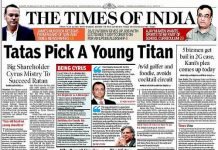As publishers increasingly embrace the art and science behind the economics of content, the freemium model for digital subscriptions is clearly emerging as the most popular choice for publishers. This was the key conclusion from the inaugural Media Subscriptions Summit in London produced by the International News Media Association (INMA), punctuated by a survey of participants.
Attended by more than 230 delegates from 33 countries at Reuters headquarters in London’s Canary Wharf, the INMA summit featured 15 global best-in-class case studies on digital subscriptions. The summit was augmented by a two-day study tour of London media houses at the forefront of the digital subscription revolution: The Times, The Daily Telegraph, The Guardian, Financial Times, Immediate Media, and Sky Media.
“Cutting across four days of summit, study tour, survey, and moderated group discussions, INMA concludes that the biggest indicators of digital subscription over-performance are the adoption of a clear growth mission, a unified company-wise approach, deep knowledge or strong hypothesis about valuable audience segments, and a membership mindset as the foundation on which subscriptions can be built,” said Earl J. Wilkinson, executive director and chief executive officer of INMA. “The companies succeeding the most have undergone a complete transformation to focus on a core value proposition, brand, communications, effective content, products, pay methods, and customer excellence.”
The survey of summit participants unveiled clear directions by publishers:
Looking to change models: Roughly 41% of survey participants are unhappy with their paid content model, while 34% say their model has met expectations and 25% say it has exceeded expectations. Two-thirds of survey participants are looking to switch models, while 76% are looking to add new features to their pay model. Personalisation across both freemium and metered models represents a rising focus, with market leaders being Neue Zürcher Zeitung (NZZ) in Switzerland and Aftenposten in Norway.
Freemium satisfaction: The freemium model represented 54% of paid models among survey participants – and the highest levels of satisfaction, with 80% and 82% of minor and major freemium lock-down model participants, respectively, reporting freemium either met or exceeded expectations.
Metered dissatisfaction: Few publishers are reporting satisfaction with meters. While 34% of survey participants use a metered model, the performance of that model falls below expectations both for porous meter users (57%) and strict meter users (75%). The porous metered model represents the most chaotic responses: Some 29% of survey respondents said their porous metered model has exceeded expectations, while 57% said it performed below expectations. Overall, it is emerging that those publishers who are reporting success with metered access are those specialised or highly focused brands.
Digital subscriber churn, meanwhile, remains a challenge for publishers. Some 46% of survey participants said that digital subscriber churn is higher than print subscriber churn – with 19% saying it is much higher. Among common themes to reduce churn include acquiring subscribers the right way the first time, discontinuing discounting, improving engagement, enhancing the brand proposition, and removing credit card renewal friction.
Membership benefits beyond content subscriptions were offered by 47% of INMA survey participants with the most prominent being exclusive talks, retailer discounts, live entertainment, movie tickets, free small electronic devices, and sports tickets.
The INMA media subscriptions survey data will be made exclusively available to the association’s members in a report scheduled to be released next week along with complete coverage from the week-long summit and study tour. Among topics covered in the survey include insights to priorities in paid content among peer publishers, performance differences among paid content model types, the impact on advertising, payment terms, content and benefit triggers in acquisition, subscription packages, payment terms, and more.
“What was re-enforced at the London summit is that there is no one single digital subscription model that matches the context across all media companies serving all markets,” Wilkinson said. “As we all get smarter about content economics, we now see that was a flaw from the past two decades: the belief in a silver bullet. Instead, careful thought needs to be given to publication genre, content productivity, brand strengths, corporate and people assets, and much more.”
The Media Subscriptions Summit featured case studies from The New York Times, News UK’s The Times and The Sunday Times, Boston Globe Media, Amedia, Politiken, Fairfax Media, Dagens Nyheter, Helsingin Sanomat, Aftenposten, Neue Zürcher Zeitung (NZZ), Financial Times, BILD, The Economist, and the Wall Street Journal – each with a slightly different model yet with common themes that contributed to INMA conclusions. Keynotes by Membership Economy author Robbie Kellman Baxter and University of Oxford senior research fellow Grzegorz Piechota were augmented by how Facebook and Google are supporting subscription efforts.
With INMA taking the media industry lead on paid content, the association announced the 2nd Annual Media Subscriptions Week will be held on 18-22 March 2019, in Stockholm.


















